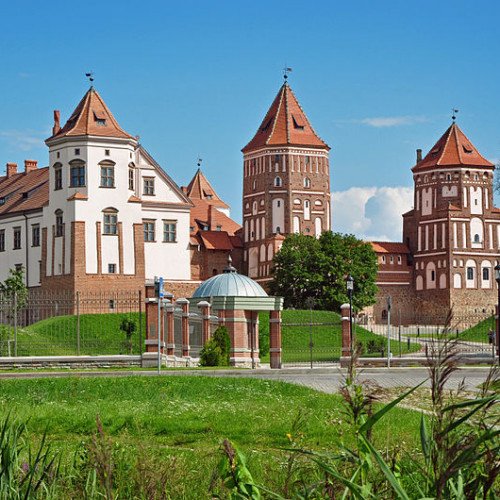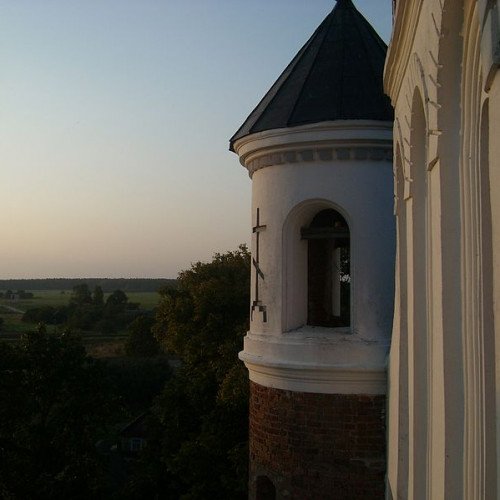Castles of "Belarus" MIR CASTLE COMPLEX vs MURAVANKA

MIR CASTLE COMPLEX
The Mir Castle Complex (Belarusian: Мірскі замак, Łacinka: Mirski zamak, Lithuanian: Myriaus pilis, Polish: Zamek w Mirze) is a historic fortified castle and a UNESCO World Heritage site in Belarus. It is located in the town of Mir, in the Kareličy District of the Hrodna voblast, at 53°27′4.46″N 26°28′22.80″E, 29 kilometres (18 mi) north-west of another World Heritage site, Niasviž Castle. Mir Castle Complex is 164 metres (538 ft) above sea level. Erected in the 16th century in the late Brick Gothic style, it is one of the few remaining architectural monuments of the former Polish–Lithuanian Commonwealth in contemporary Belarus. Duke Juryj Ivanavič Illinič (pl:Jerzy Iwanowicz Ilinicz) began construction of the castle near the village of Mir after the turn of the 16th century in the Polish Gothic style. Five towers surrounded the courtyard of the citadel, the walls of which formed a square of 75 metres (246 ft) on each side. In 1568, when the Ilyinich dynasty died out, the Mir Castle passed into the hands of Mikołaj Krzysztof "the Orphan" Radziwiłł, who refitted it with a two-winged, three-story stately residence along the eastern and northern inner walls of the castle. Plastered facades were decorated with limestone portals, plates, balconies and porches in the Renaissance style. In 1817, after the castle had been abandoned for nearly a century and had suffered severe damage in the Battle of Mir (1812), owner Dominik Hieronim Radziwiłł died of battle injuries and the castle passed to his daughter Stefania, who married Ludwig zu Sayn-Wittgenstein-Berleburg. Later the castle became a possession of their daughter Maria, who married Prince Chlodwig Hohenlohe-Schillingsfürst. Their son, Maurice Hohenlohe-Schillingsfürst, sold the castle to Mikalaj Sviatapolk-Mirski, of the Bialynia clan, in 1895. Nikolai's son Michael began to rebuild the castle according to the plans of architect Teodor Bursze. The Sviatapolk-Mirski family owned the castle until 1939, when the Soviet Union occupied eastern Poland. When German forces invaded the Soviet Union in 1941, they occupied the castle and converted it to a ghetto for the local Jewish population, prior to their murders. Between 1944 and 1956, the castle was used as a housing facility, resulting in damage to the castle's interior.
Statistics for this Xoptio

MURAVANKA
Muravanka (Belarusian: Мураванка) is a village in Belarus. It is located in the Shchuchyn District of Grodno Region. The village is famous for its fortified church of the Nativity of the Blessed Virgin Mary. Since foundation in the 16th century Muravanka was a part of the Grand Duchy of Lithuania. In 1795 the Polish–Lithuanian Commonwealth was partitioned between Russia, Prussia and Austria and the village became a part of the Russian Empire. After World War I it's a place in Nowogródek Voivodeship of the Second Polish Republic and after World War 2 it was returned to Belarus.